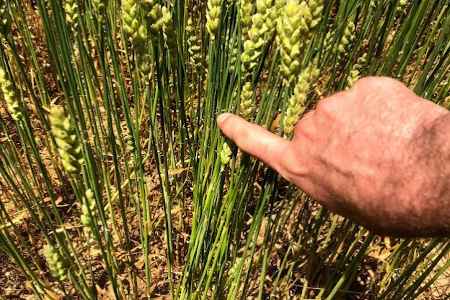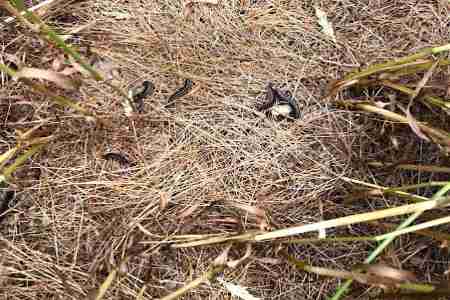By Ricardo Costa and Christina DiFonzo
Some wheat growers in southern Michigan counties have experienced their first true armyworm outbreak since 2010. In the past few days, we have been contacted by several farmers in many Michigan counties complaining about true armyworm infestations in their wheat fields and asking what they could do about it.
While scouting one of these fields, we found about eight to 10 larvae per square foot—remember, the threshold is only two larvae. A significant number of them were around 1 inch long, which tells us they still could be eating for a few more days.
In some areas, the plants had all of their leaves eaten by the worms, but the heads, for the most part, were still there. Since the plants were already in the milk stage (Feekes 11.1) and because stripped plants can yield 50% to 60% of their undamaged potential yield, we concluded that the field should be sprayed. In her recent Fonz Facts newsletter, Michigan State University Extension entomologist Christina DiFonzo said a 50% yield potential may sound low. However, the average wheat yield in Michigan is around 80 bushels per acre, while the equivalent average yield is about half in western states like Kansas.

Wheat plants without leaves due to true armyworm feeding
The importance of regularly scouting your fields, not only for insects but also for weeds and plant diseases, can't be emphasized enough. Your goal is always to apply insecticides when larvae are above threshold levels, but before they cause most of the damage. When scouting, shake off the plants and look under the crop residue to find larvae. You can't exactly predict when an infestation will happen, but trapping for armyworms and other insects can help inform you where you can expect to see true armyworm activity in your area, giving you enough time to scout and control the pest before an outbreak happen.

True armyworm larvae laying on residue.
When spraying, one crucial thing to consider is the preharvest interval (PHI). DiFonzo states that insecticide choices on wheat have narrowed over the years, and the PHIs of the remaining products are long. Products such lambda-cyhalothrin (Warrior), gamma-cyhalothrin (Proaxis) and cyfluthrin (Baythroid, Tombstone) have a 30-day PHI while cypermethrin (Mustang, Fastac) has a 14-day PHI.
Source : msu.edu